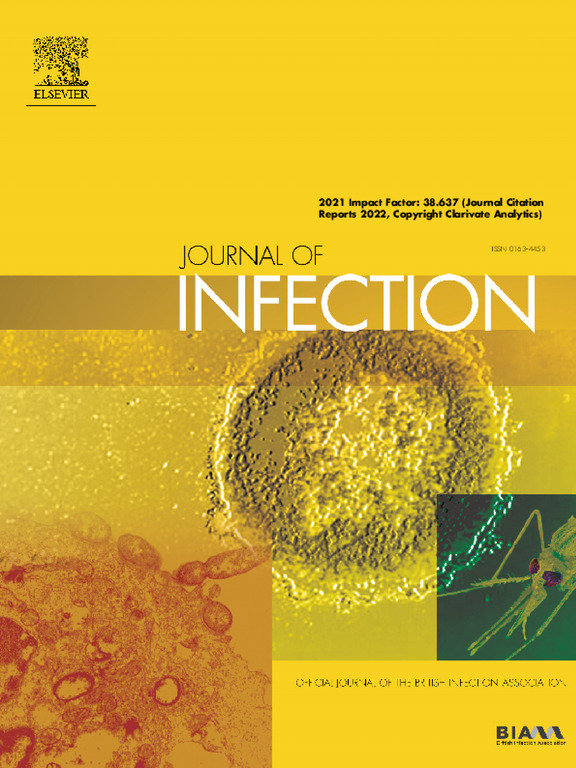Host-derived Delta-like Canonical Notch ligand-1 in sepsis and septic shock: Infection site, pathogens and disease severity matter – Secondary analysis of data from a randomized controlled trial
IF 14.3
1区 医学
Q1 INFECTIOUS DISEASES
引用次数: 0
Abstract
Background
Sepsis is a life-threatening condition and many biomarkers for diagnosing and treatment guidance have been investigated in recent years. However, new ones are emerging almost daily, only few markers with diagnostic value have passed to entered clinical routine application. Delta-like canonical Notch ligand-1 (DLL-1) seems to be a potential contributor in the differentiation between sepsis and non-septic infection. Its role for clinical application and potential septic outcome prediction is yet unclear.
Methods
This study is a secondary analysis of data and DLL-1 measurements from plasma samples obtained in the SISPCT trial. Primary objective of this explorative study was to investigate the difference of DLL-1 values between patients with sepsis and septic shock. Secondary objectives were the differences in DLL-1 levels in patients with different blood culture results, with infections caused by different pathogens, by origin of infection and disease severity. Furthermore, the study investigated the use of DLL-1 for in-hospital and intensive care unit (ICU) mortality prediction. Therefore, data from 1.027 patients were analyzed.
Results
DLL-1 values were significantly higher in patients with septic shock than in septic patients (13,003 ± 7695 pg/mL and 9257 ± 4188 pg/mL, p<0.001). Patients with abdominal infections, primary bacteremia or surgical wound infections exhibited the highest DLL-1 values. In addition, patients with gram-negative pathogens had significantly higher DLL-1 levels than those with specific gram-positive pathogens or negative blood cultures (p<0.001). Infections caused by Escherichia coli, Enterobacterales, and Staphylococcus aureus were associated with the highest DLL-1 levels (18,341 pg/mL, (12,968; 23,250), 21,556 pg/mL (14,386; 30,939) and 16,352 pg/mL (11,905; 25,853), respectively). DLL-1 levels correlated with increasing SOFA scores and demonstrated predictive value for in-hospital and ICU mortality, with an AUC of 0.7, outperforming lactate and procalcitonin.
Conclusion
Delta-like canonical Notch ligand-1 (DLL-1) is increased in septic shock compared to sepsis. Its elevation appears to be dependent on the infection focus, the triggering pathogen and the disease severity. Furthermore, it has a predictive value for mortality.
宿主衍生的δ样规范Notch配体-1在败血症和脓毒性休克中的作用:感染部位、病原体和疾病严重程度的关系——一项随机对照试验数据的二次分析
脓毒症是一种危及生命的疾病,近年来研究了许多用于诊断和治疗指导的生物标志物。然而,几乎每天都有新的标志物出现,只有少数具有诊断价值的标志物通过进入临床常规应用。δ样典型Notch配体-1 (DLL-1)似乎是脓毒症和非脓毒症感染区分的潜在因素。其在临床应用和潜在脓毒性结局预测中的作用尚不清楚。方法本研究是对SISPCT试验中获得的血浆样本的数据和DLL-1测量的二次分析。本探索性研究的主要目的是探讨脓毒症和脓毒性休克患者dl1值的差异。次要目的是不同血培养结果、不同病原体感染、感染来源和疾病严重程度的患者中dl1水平的差异。此外,本研究还调查了dl1在院内和重症监护病房(ICU)死亡率预测中的应用。因此,我们分析了1.027例患者的数据。结果脓毒性休克患者的dll -1值明显高于脓毒性休克患者(13,003±7695 pg/mL和9257±4188 pg/mL, p < 0.001)。腹部感染、原发性菌血症或手术伤口感染患者的DLL-1值最高。此外,革兰氏阴性病原体患者的DLL-1水平显著高于特定革兰氏阳性病原体或血培养阴性患者(p<0.001)。大肠杆菌、肠杆菌和金黄色葡萄球菌引起的感染与最高的DLL-1水平相关(18,341 pg/mL, 12,968;23,250), 21,556 pg/mL (14,386;30,939)和16,352 pg/mL (11,905;25853),分别)。DLL-1水平与SOFA评分升高相关,并显示出对住院和ICU死亡率的预测价值,AUC为0.7,优于乳酸和降钙素原。结论与脓毒症相比,脓毒症患者δ样Notch配体-1 (dl -1)水平升高。它的升高似乎取决于感染病灶、触发病原体和疾病严重程度。此外,它对死亡率有预测价值。
本文章由计算机程序翻译,如有差异,请以英文原文为准。
求助全文
约1分钟内获得全文
求助全文
来源期刊

Journal of Infection
医学-传染病学
CiteScore
45.90
自引率
3.20%
发文量
475
审稿时长
16 days
期刊介绍:
The Journal of Infection publishes original papers on all aspects of infection - clinical, microbiological and epidemiological. The Journal seeks to bring together knowledge from all specialties involved in infection research and clinical practice, and present the best work in the ever-changing field of infection.
Each issue brings you Editorials that describe current or controversial topics of interest, high quality Reviews to keep you in touch with the latest developments in specific fields of interest, an Epidemiology section reporting studies in the hospital and the general community, and a lively correspondence section.
 求助内容:
求助内容: 应助结果提醒方式:
应助结果提醒方式:


